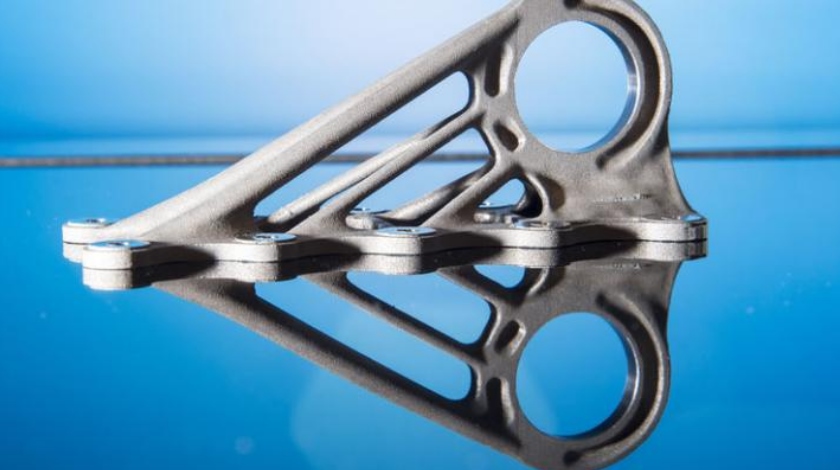Photo: Airbus
Reading Time: < 1 minuteAirbus says it has installed the first 3D-printed titanium part on an in-production aircraft.
Production of the A350 bracket, part of the engine pylon, “is the first step towards qualification of more complex 3D-printed parts to be installed on production aircraft,” says Airbus.
One reason for the cautious adoption of 3D printing, also known as additive manufacturing (AM), is that metal parts thus produced can exhibit lower fatigue and static strengths than conventionally milled components.
In part, this is down to the granular nature of the surface of an AM part, which is ‘printed’ from the ground up using a material powder – such as aluminium, titanium, stainless steel and plastics – and adding thin layers of that material in incremental stages.
Last year GKN Hoeganaes agreed to enter into a joint venture agreement with TLS Technik to manufacture titanium powders in North America for AM applications in aerospace.
One the day of Airbus’ announcement, meanwhile, French aerospace company Thales opened a new AM facility in Morocco.
Its Industrial Competence Centre will specialise in metal AM and currently houses two selective laser melting systems, which it hopes to take to 10.
The company will use the machines to produce metal AM parts in aluminum and titanium.
GKN and Thales’ confidence in the technology is down to the advantages that AM offers, principal among which is the ability to build complex parts with big weight savings.
A component, for instance, could be made with a partially hollow structure, with material concentrated on the surface where stresses are highest.
One of the major applications for such techniques in inside engines, where the precision and tolerances required of components pushes manufacturing to its limits.

